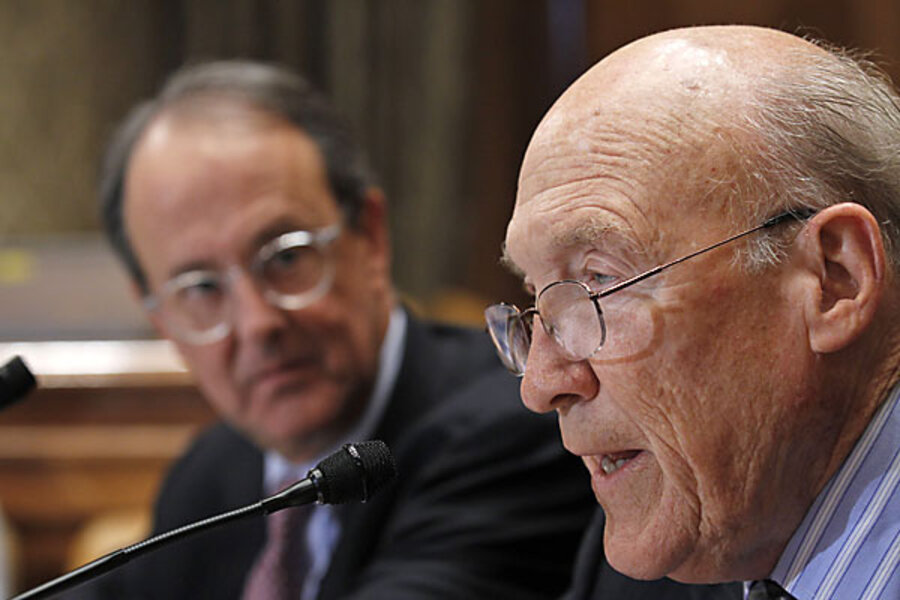Retirement age at 69? Deficit plan hits Social Security.
Loading...
The Social Security reform trial balloon is floating. How high will it go, and what would it mean to beneficiaries?
The draft plan released today by the national deficit commission co-chairs Alan Simpson and Erskine Bowles contains long-term changes to Social Security composed roughly of two-thirds benefits cuts – including a hike in the retirement age – and one-third revenue hikes.
Social Security today runs a huge surplus, but its trust fund will be exhausted in 2035 if adjustments aren't made. The shortfall really has nothing to do with today's federal budget deficit, but the commission is making recommendations here all the same to deal with the fund's long-term solvency.
The proposals from Simpson and Bowles would be phased in over time; here are the three most important cuts to benefits:
1. Benefits formula: Simpson and Bowles recommend some highly technical changes to the formula used to determine benefits. This is the biggest single change, reducing the Social Security Trust Fund (SSTF) long-term shortfall by 45 percent. These changes would affect the way Social Security averages workers' lifetime earnings to determine benefits.
2. Boost the retirement age. The full benefits retirement age would rise to 68 by 2050, and 69 by 2075. Reform advocates and actuaries argue that we'll all need to work longer due to rising longevity rates. But it's important to understand that boosting Social Security's full retirement age is a lifetime benefit cut for everyone, no matter when you retire. Earlier this year, advocates at Social Security Works calculated that raising the full retirement age to 70 from 67 would reduce lifetime benefits by 19 percent for a worker entitled to a monthly payment of $1,000.
Working longer is a key strategy for improving retirement security – for knowledge workers and professionals best positioned to pull it off. It doesn't work well for workers who do physically demanding low income jobs. Simpson and Bowles are recommending a "hardship exception" for certain occupations where working longer isn't an option, but the devil will be in the details. Ask anyone who has struggled to qualify for Social Security disability payments – the process is long and complicated.
3. COLA changes: Simpson and Bowles recommended changing Social Security's cost-of-living adjustment (COLA) formula. This change will be especially controversial, since the change will reduce inflation increases and it would be phased in starting in 2012. That means it would impact not just future beneficiaries, but today's seniors.
Simpson and Bowles propose replacing the current measure – CPI-W – with a new "chained CPI" that takes into account "substitution purchases" consumers make to avoid high prices. The "chained" CPI is expected to rise 0.3 percent less annually than the CPI-W.The COLA is one of Social Security's most valuable and important benefits, although no COLAs were awarded this year or for 2011 due to the current low rate of inflation. Shifting to a chained CPI would diminish the long-range Social Security shortfall by about 25 percent.
Critics of this reform argue that the chained CPI doesn't reflect accurately the inflation seniors experience, since they spend a higher portion of income on health care, where prices are rising much more quickly than general inflation. Indeed, research by Fidelity Investments shows that retiree healthcare expenses this year are 4.2 percent higher than in 2009, and have jumped 56 percent since 2002. By contrast, overall consumer prices are up just 1.1 percent so far this year. Soaring medical costs are a major contributor to rising rates of bankruptcy filings by older Americans.
Revenue: Simpson and Bowles proposed one significant revenue increase to support the SSTF. The maximum percent of wages taxed (via the payroll tax) would be increased gradually to cover 90 percent of wages by 2050. It's complicated, but the bottom line is more income would be subject to taxes.





